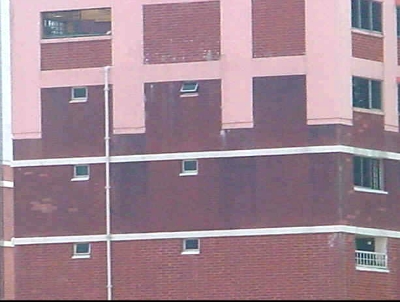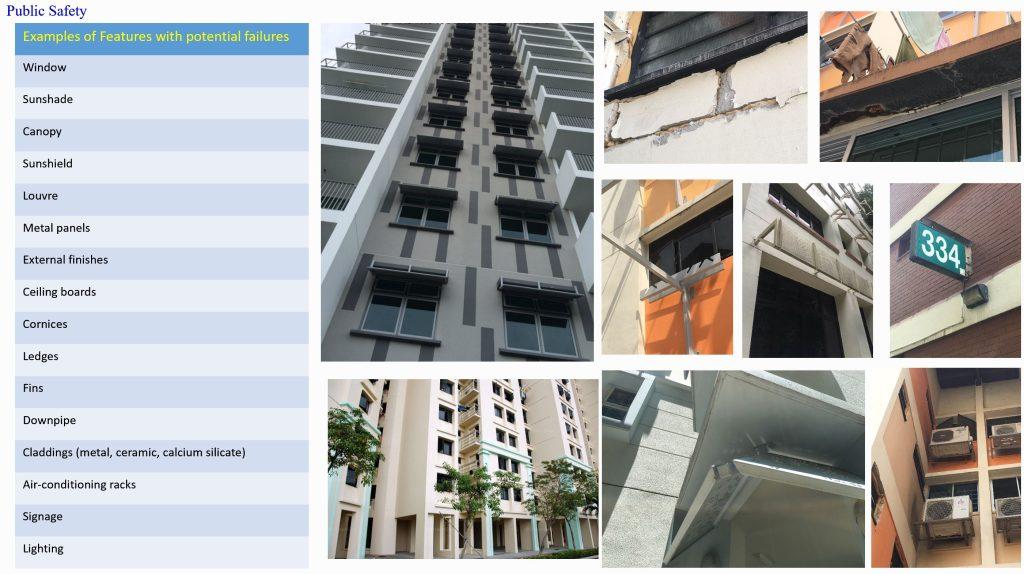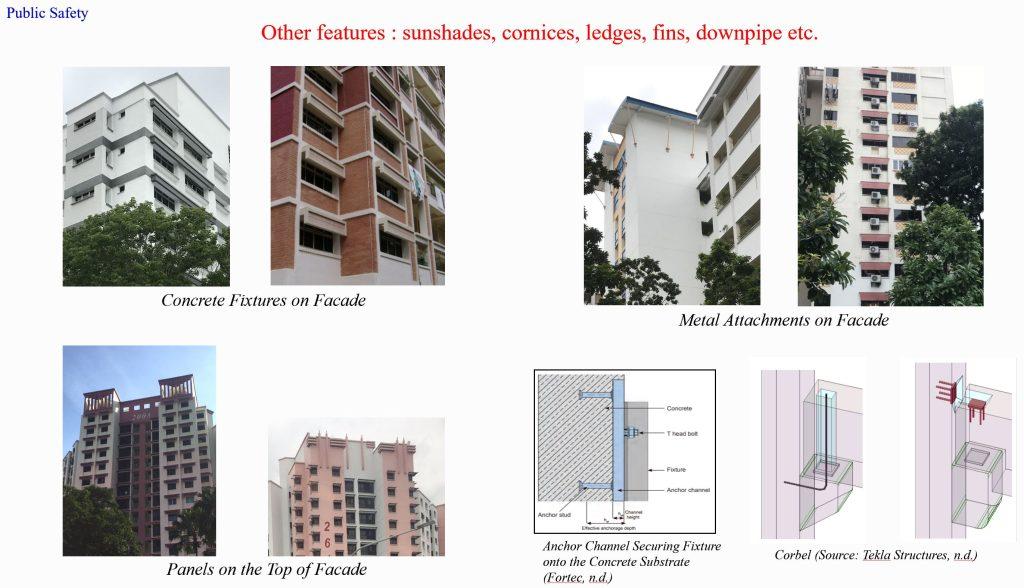Case 2
- Introduction
- Causes of Defects
- Good Practices
- Standards
- Maintenance and Diagnostics
- Remedial
- Similar Cases
- References

Introduction
Type of Building: Public residential flats
In this case, a distinct colour variation across the brickwork facade is caused by prolonged dirt accumulation brought about due to rainwater run-off over facade features.


The accumulation of dirt coupled with the high water absorption of brickwall may facilitate the biological growth algae, moss and lichen, especially where the mortar joints are recessed. This will present another form of staining.
In Singapore, exposed brickwall are mainly used as facade material for low rise (6 storey and below) buildings or for high rise public residential flats. When used as a facing material, bricks are usually able to add visual authority to a building through the accumulation of dirt and will be able to age gracefully over time and not be an eyesore. However, when localised areas of a brickwall experienced serious staining problems, this visual impact will then be lost.
Staining can be predicted according to the joint design, absorption property of the facade materials, as well as the rainwater runoff pattern, and hence moisture movements and/or retention induced problems such as dirt, biological stain, corrosion, efflorescence and sealant deterioration can also be predicted at the planning/design stages.